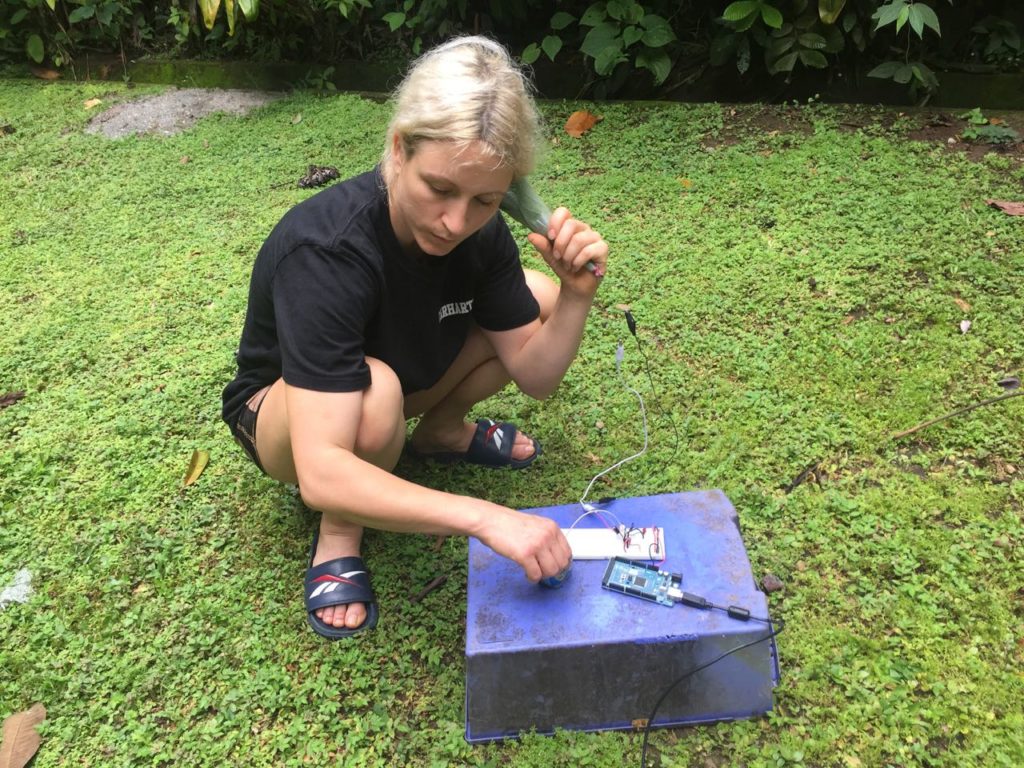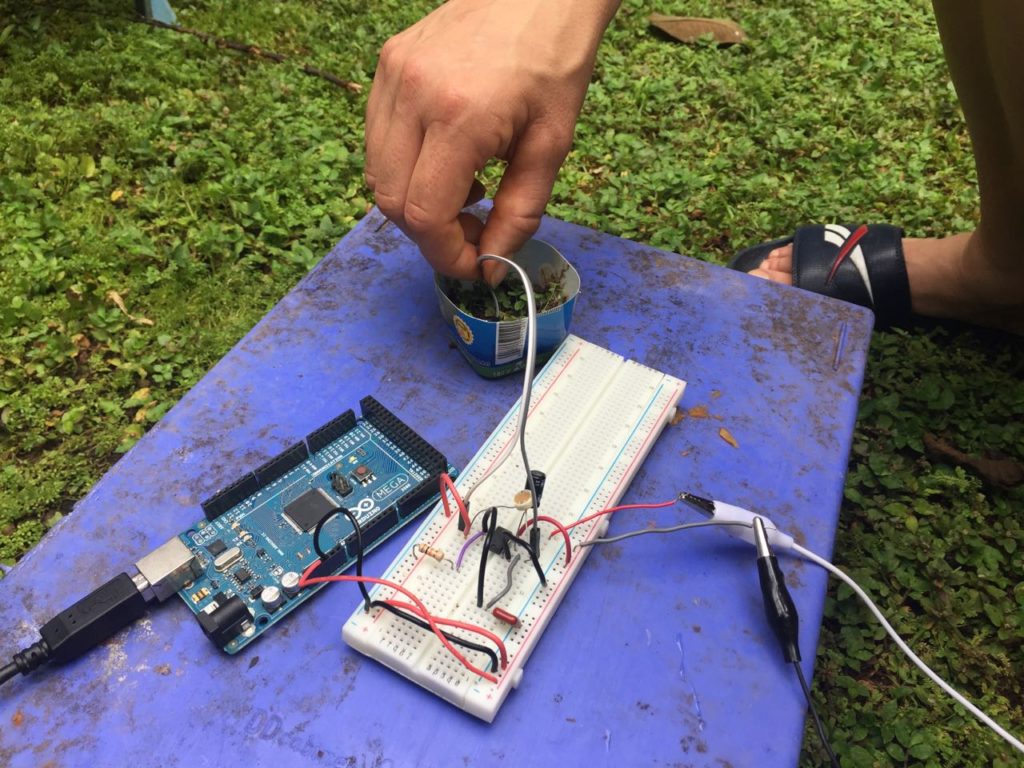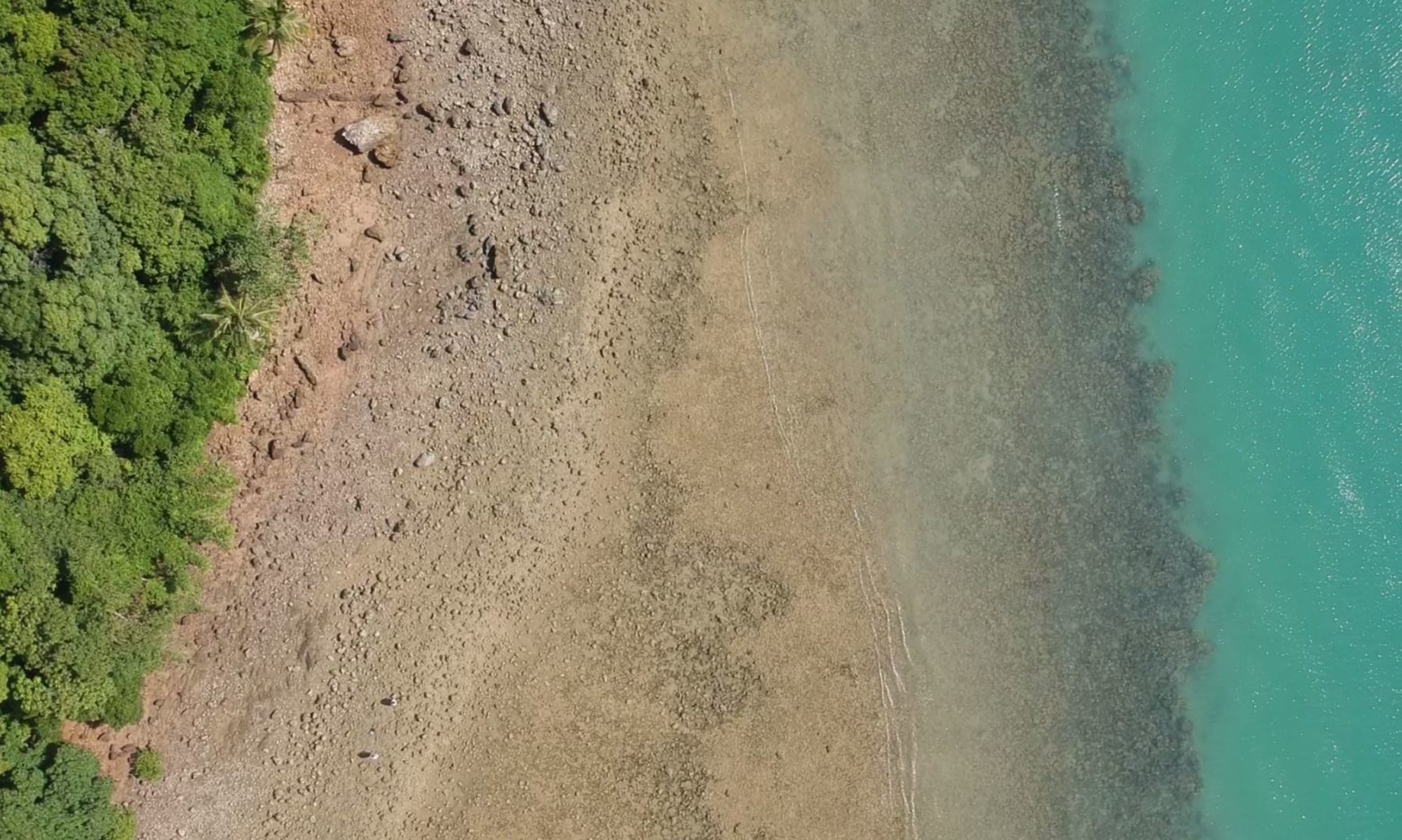by Stephanie Rothenberg
The first time I heard about Andy Q and Digital Naturalism was when I stumbled across a copy of “Hacking the Wild: Madagascar” from 2015 on the internet. I found it to be incredibly thought provoking and inspiring. The hand drawn zine illustrated a 10-day expedition of a small group of folks that included artists, designers, scientists and locals who were exploring the diverse ecosystem of Madagascar through the design of simple electronic hacks. The zine was a collection of photographs, sketches of prototypes and personal and collective deep thoughts. The DIY convergence of nature with analog/digital media as a way to not only experience the wild but to exist within it continued to resonant in my mind. After Hurricane Maria hit Puerto Rico in 2017 and completely devastated the island, I started thinking more about DIY survivalist technologies — things you can quickly hack together in an emergency situation that could provide communication, power, food (especially things you can create with paper towel rolls).
Over the next year, I developed a project around this theme titled “Trading Systems: Bio-Economic Fairy Tales” that looked at the failures and inequities of human designed systems. It raised the question — what might it look like if non-humans were put in the driver’s seat of Puerto Rico’s reconstruction? The project engaged rather whimsical solutions to underscore the severity of the destruction and lack of support from the US government. Some of the design hacks included lemon batteries as a solution to the island’s non-functioning power grid and leveraging the earth’s own electromagnetic waves for communication through self-powered crystal/fox hole radios made out of household items such as lead pencils and razor blades .
So when the opportunity emerged this summer to participate in a Dinacon I was more than excited! I had big project ambitions for my 2 weeks in Gamboa but as it happened I was so enthralled with the energized, lovely human and non-human community and lascivious landscape that I got just a tiny bit distracted. I will admit that some of my luxurious time was spent attempting the following: #1) impersonating a human laser frog chorus, #2) interspecies communication with agouti on best garbage foraging practices, #3) outracing a supermax ship in a slowly leaking kayak, #4) thinking about harvesting energy from baby crocodiles, and of course #5) swimming at the “tropical palace” every moment possible (you can IM me for details).
But the majority of my time was spent reflecting on the wonderful hacks the Madagascar team created and seeing if I could recreate them. Although I made headway on a few, the one pictured here was most successful. I call it “Andy’s Ear” — a circuit and speaker made from a leaf, wax, metallic wire and magnets. Other experiments included exploring fiber optic threads to make an insect sensor, organic breadboards with giant mushroom caps, and a tactile way to analyze/collect data through your tongue using wire probes, a leaf and conductive thread. I am continuing to explore these digital-natural hybrids systems to incorporate into larger, future projects and so thankful for the amazing time I had learning and sharing at Dinacon!
Special thanks to the marvelous Jana for her expert modeling skills!
website: http://stephanierothenberg.com





